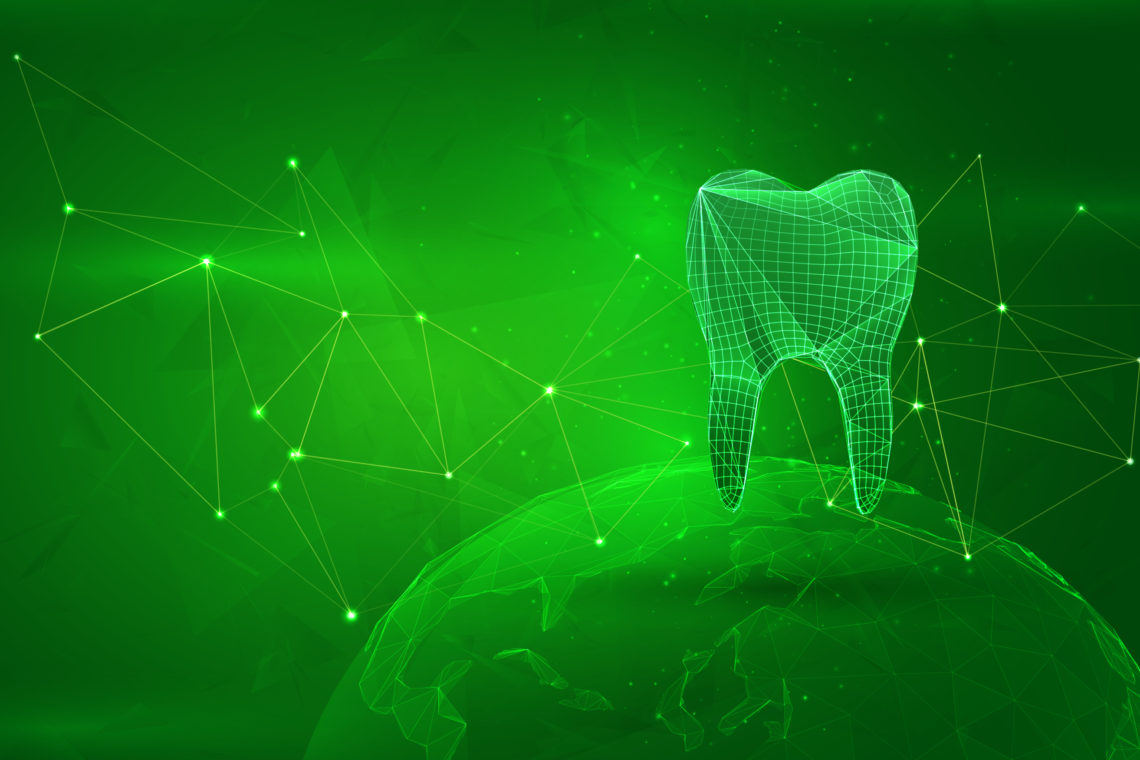
e-Newsletter
Vielen Dank,
wir haben Dir eine E-Mail an gesendet. Bitte bestätige diese.

Every day brings another headline about the effect that human beings are having on the environment, whether it is the increase in extreme weather, the depletion of the rainforests, or the spread of microplastics. The solutions needed to tackle these issues can seem as wide in scope as the problems themselves—certainly none of them can be solved by one person alone. But every individual effort helps, and the results add up.
For example, the EcoDentistry Association estimates that the dental industry throws away 680 million disposable barrier items annually. If each practice could replace just half of its barrier items with reusable ones, that’s 340 million pieces of trash that don’t wind up in a landfill every year.
So as you start your dental career, take a moment to look at your new workplace and ask yourself: Where are the opportunities to lessen your environmental impact?
The Usual Suspects
The EcoDentistry Association cites 4 major culprits when it comes to environmentally unfriendly processes in dentalpractices: (1) infection control, (2) use of mercury-containing materials, (3) conventional radiography, and (4) use of conventional suction systems.
Infection Control
Obviously, infection control is a non-negotiable part of dentistry. On the other hand, awareness of the amount and kinds of single-use items and toxic chemical waste being discarded from infection control procedures every day may suggest some places to start making greener changes. Reusable barriers and suction tips, steam sterilization with reusable or compostable pouches instead of chemicals and plastic single-use pouches, and non-toxic cleaning products are just a few ways to start minimizing the practice’s environmental footprint without sacrificing staff or patient safety.
Amalgam
While today’s resin composites largely alleviate the need to place new amalgam restorations, there are still old fillings to remove, and dental offices need amalgam separators to keep mercury out of wastewater systems. The EPA has estimated that 50% of all mercury entering the public water systems—approximately 5.1 tons annually—comes from dental offices. As of July 2020, all dental offices that handle amalgam, new or old, are required to have an amalgam separator.
Radiography
Digital radiography has several advantages over conventional, not least of which is avoidance of film-processing chemicals and lead foils, both of which pose toxic hazards to people if improperly disposed of. Conventional films also require physical storage space.
Water
Conventional suction systems use a great deal of water—up to 360 gallons a day! With water becoming an ever-more precious commodity, switching to a waterless system can not only help conserve resources, but cut down the practice’s water bill as well. (In fact, contrary to popular belief, many environmentally friendly efforts save money.) Other water-saving measures include installing low-flush toilets and turning off water while lathering hands during handwashing.
Digging Deeper
Beyond these 4 categories, the mantra “reduce, reuse, recycle,” also known as the 3 R’s, can be applied anywhere in the practice to help identify greener alternatives. Below are just a few examples; for more ideas, see the ADA’s “80 Ways to Make Your Practice Green.”
Reduce
Reduce energy consumption. Great dentistry needs great light, but great light doesn’t need to be incandescent or fluorescent. Switching to LEDs can significantly decrease the energy needed to illuminate your office and your work by using a quarter of the power needed for incandescent bulbs, and almost half that used by compact fluorescent lights. If possible, increasing the amount of natural light can also help cut back the amount of electrical lighting needed.
Other appliances can be greener too. EnergyStar-labeled devices like washing machines consume less energy than their standard counterparts. Devices that go into standby mode are constantly using a tiny bit of energy to remain alert; if these can’t be easily replaced, consider turning them off completely overnight.
Go paperless. Digital records save not only paper, but also office space. Switch to recycled paper for those items that still need to be printed.
Reuse
In addition to purchasing reusable infection control items, look at single-use supplies and consider whether bulk quantities are an option—for example, using tubs of prophy paste to refill reusable cups rather than purchasing individual plastic cups. This practice can also help cut down on wasting “leftovers” and on packaging and shipping materials and costs.
Recycle
Recycling programs exist for many types of waste, from glass, aluminum, and paper products to worn-out hand instruments to empty toothpaste tubes. And they don’t have to be limited to office waste. Some practices allow patients or even members of the local community to drop off recyclable items. Setting up bins for items that can be handled by a local recycling effort is an easy way to start “greening up” your office.

Rethink
When the 3 R’s hit a roadblock, it’s time for the 4th: rethink. Is there a new approach to an old, wasteful problem? Maybe your office can have an impact beyond its walls, such as offering incentives for staff to carpool or use more environmentally friendly transportation. Or maybe the quintessential “goody bag” can be made of biodegradable plastic. Or maybe your office can become carbon neutral.
Gettiing Started
If you are going to operate your own practice, you are in the enviable position of being in the driver’s seat to make changes that can modernize and improve your practice in all sorts of ways, including its environmental effect. The EDA provides a “starter kit” for assessing how green your practice is and where it can improve. If you become an associate or join a DSO, you can look at your office with fresh eyes and see possibilities that people who have been there longer take for granted. Every step toward becoming greener, no matter how small, is one in the right direction.







